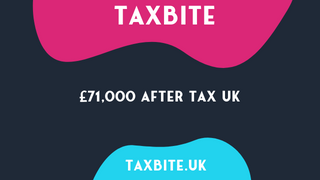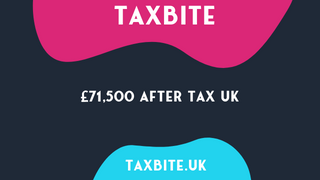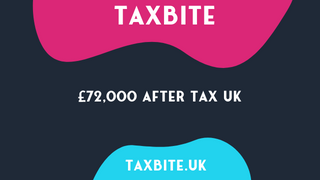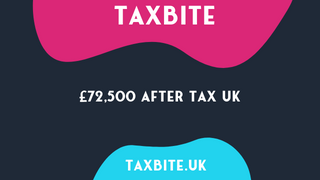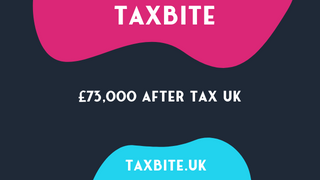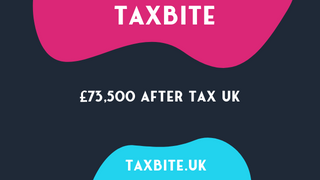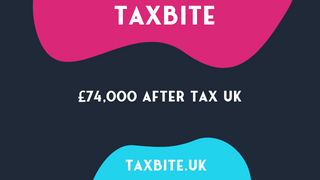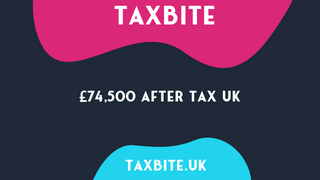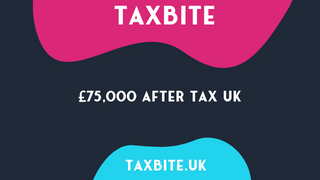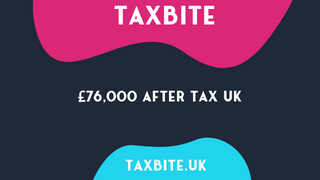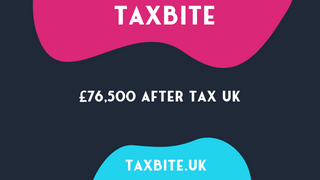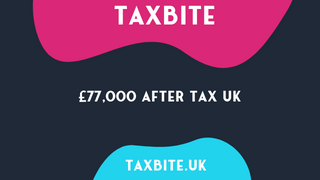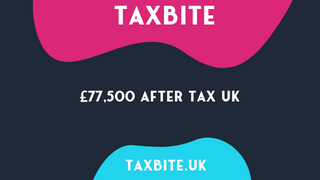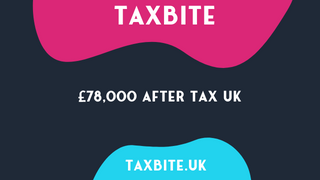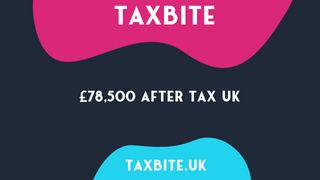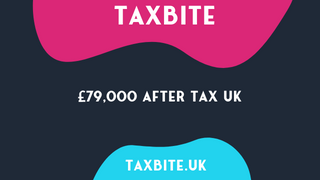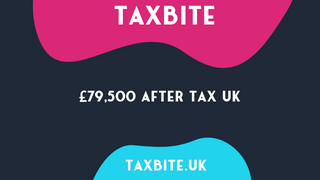Making sense of your income is crucial to achieving your personal finance goals. In this breakdown, we’ll take a closer look at how much you can expect to take home with a gross income of £76,500 in the UK after taxes and other deductions are taken out.
We’ll explore the different components that make up your after-tax income, such as:
So, let’s dig in and get a better understanding of what you can realistically expect to earn in the coming years.
To understand your tax liability, you need to break down both your gross income and taxable earnings. Gross income is all your salary before taxes, while taxable earnings are the amount that will be taxed. It’s essential to remember that National Insurance contributions are based on taxable earnings, not gross income, and this will affect your final take-home pay.
To get a clearer picture of gross income and taxable earnings, you can look at a table outlining the details. This table includes columns such as hourly rate calculation, annual earnings, taxable income, and tax liability, as well as info about employer and employee National Insurance contributions.
Tax liability depends on marginal tax rates that apply to different income brackets. Plus, personal allowances and tax credits can reduce the taxable amount, which affects your net income. Knowing these details will help you get the most out of your take-home pay.
In conclusion, to understand gross income and taxable earnings, you must factor in personal allowances, basic and higher tax rates, and National Insurance contributions. A precise knowledge of these breakdowns is essential for anyone who wants to maximize their take-home pay.
Tax liability is the amount of tax someone must pay in the UK, based on their income. To work out how much you owe, there are several things to think about. These include gross income, personal allowance, and whether you are in the basic or higher rate tax bracket. Plus, National Insurance payments are also part of the calculation.
Marginal tax rate is the percentage of tax you pay on your next pound of income. This rate differs according to your taxable income. It’s 20% for basic taxpayers and 45% for those in the highest tax bracket.
If you want to plan for after-tax money, it’s important to understand both tax liability and marginal tax rate. This includes thinking about gross income, personal allowance, taxable earnings, and NI contributions. This way, you can get more money in your pocket and help contribute to the NHS and your retirement.
Understanding the income threshold of £9,568 is essential to calculate National Insurance Contributions (NICs) in the UK. Those with an income above this must pay NICs. The rate of contribution changes, depending on how much you earn. For example, those earning over £50,270 pay a higher rate.
A table can help understand different contribution rates. It should include: annual earnings, lower and higher NIC rate thresholds, and the percentage of each.
Certain individuals may be exempt from NICs. For example, employees aged under 21, or apprentices under 25 with lower earnings.
Accurately calculating NICs is key to making the right tax payments and getting the most out of your pay. Personal allowances and tax credits can save money on taxes. Consider factors such as age, income level, and eligibility for relief or exemptions to optimize net income.
The Personal Allowance is the amount of money you can earn without having to pay taxes. Government Tax Credits are available to help those with low earnings or dependents. These credits can be subtracted from your tax bill and paid directly to you. Each year, the amount of the Personal Allowance changes according to HM Revenue and Customs (HMRC). But if your taxable income is over £125,000, your allowance will be reduced by £1 for every £2 earned.
Working tax credits are available to people whose gross income is below certain thresholds. This can reduce their overall tax liability by up to 30% of their earnings above basic allowances. There are also child tax credits which may be reconciled based on age and disabilities.
It’s important to understand your Personal Allowance and possible tax credits to maximize your net income and take-home pay. This can help you make wise decisions about deductions or pension plan and student loan contributions. To learn more about current rules related to personal allowances and tax credits, visit gov.uk. Remember the taxman always wants a share of your net income.
Professionally, it’s key to know net income and take-home pay. This indicates how much of your earnings you keep after taxes and deductions. To find out, subtract taxes, such as income tax and national insurance contributions, from gross earnings.
We’ll make a table for a complete overview. The columns include:
Gross hourly rate is what you earn before deductions. Annual earnings come from multiplying hourly rate, by weekly working hours, and weeks worked per year. Taxable earnings are annual earnings minus personal allowance. NICs differ according to salary and age.
Total tax liability includes income tax. This is based on tax brackets like 20%, 40%, and 45%. Personal allowance is the amount you can earn without tax. Plus, NICs are taken into account for income tax and NICs.
Net income/take-home pay is the amount you get after taxes. Understanding this helps with financial planning. The breakdown gives an estimate of what goes to taxes and deductions, so you can make decisions for maximum financial potential. In the next section, we’ll break down your pay for greater understanding.
With all the talk about income, it would be great to calculate how much you’ll actually be taking home. In this piece, we’ll provide all the necessary information on gross hourly rates and total tax liability, so you can understand how much you’ll be earning and paying. We’ll cover topics such as calculating your hourly rate and annual earnings, understanding your taxable income, and national insurance contributions. By taking into account these data, you can effectively plan for your financial future.
To figure out your hourly and annual earnings, it’s key to consider details such as gross income, taxable earnings, tax liability, and marginal tax rate. Knowing your net income and take-home pay is also reliant on other factors like national insurance contributions and personal allowances.
A great way to accurately calculate your hourly rate in relation to your yearly earnings is to create a table. Remember that gross hourly rate is your total income before any deductions like taxes and national insurance contributions.
For instance, if you earn £25 per hour and work 40 hours a week, you’ll make £1,000 per week or £52,000 annually. Your take-home pay may differ though, depending on factors such as student loans or pension contributions.
In addition to gross income and taxable earnings, your marginal tax rate is essential when figuring out your tax liability. National insurance contributions are used to fund state pensions and healthcare services in the UK, which means you’ll need to pay weekly or monthly payments based on your salary bracket to qualify for NIC benefits.
Your personal allowance is the amount you’re allowed to make before paying taxes. It may vary based on your individual circumstances. Additionally, if you meet HM Revenue & Customs (HMRC) conditions, you may qualify for Tax Credits, which can give more benefits.
To sum up, calculating hourly rates is important for working out annual earnings. This takes into account various elements such as gross income, taxable earnings, personal allowances, and tax credits. It’s essential to factor in national insurance contributions to get an exact representation of your net income and take-home pay. Keep in mind that a portion of your paycheck will be taken away for taxes, and it’s key to comprehend gross income and taxable earnings to manage your finances well.
Breaking down Gross Income and Taxable Earnings is essential. It helps us understand how much income is subject to tax.
Gross earnings are the total wages earned before deductions and taxes. And Taxable earnings are what’s left after taking into account personal allowances, reliefs, and so on.
We can make a table to better show how to calculate Gross Income and Taxable Earnings. It’ll have columns like hourly rate, hours worked per week/year, gross salary per week/year, personal allowance, taxable earnings, and so on. This’ll help people figure out their taxable income accurately.
It’s important to remember that not all earnings are taxable. Some benefits or allowances may be exempt from taxation. Plus, some types of income may be taxed differently. So, it’s best to get professional help when calculating taxable earnings.
Work out your marginal tax rate and taxable income carefully for understanding your income after tax in the UK.
Marginal tax rate is the percentage of tax for every extra pound of your taxable income above your personal allowance. From the table, those with taxable incomes up to £12,570 don’t pay any marginal tax. As income goes higher, marginal tax rate increases too. Remember, taxpayer might reduce their overall liability by utilizing allowances and deductions like personal allowance and pension contributions.
When it comes to your take-home pay, National Insurance Contributions and Tax Credits are important. The UK requires individuals earning income to pay National Insurance Contributions. These funds go to state benefits such as the NHS and State Pension Scheme.
Taxpayers may claim tax credits based on their circumstances. These credits provide financial aid to low-income households, families with children, or those with disabilities.
It’s essential to know how National Insurance Contributions and Tax Credits affect your tax liability. Tax credits may reduce your taxable income or offset your tax liability. Also, changes in employment or earnings could affect eligibility for these programmes.
Government regulations can change yearly for National Insurance Contributions and Tax Credits. So, it is important to stay informed to understand how they affect your take-home pay.
According to The Balance, National Insurance Contributions are 12% of earnings between £9,568 and £50,270 for employees. Above this threshold is charged at 2%. Keep in mind that these figures can change.
Know your net income and take-home pay, taking into account your National Insurance Contributions and Tax Credits. Your wallet will be thankful!
Calculating net income and take-home pay is not easy. Many taxes, allowances, and deductions must be taken into account. The difference between the original gross income and the amount you receive can be large.
A table of an individual’s net income for an annual salary of £76,500 illustrates this. The columns show: gross income, taxable income, tax liability, national insurance contributions, personal allowance, tax relief, and net income or take-home pay.
| Gross Income | Taxable Income | Tax Liability | National Insurance Contributions | Personal Allowance | Tax Relief | Net Income/Take-Home Pay |
|---|---|---|---|---|---|---|
| £76,500 | £63,540 | £21,042 | £4,826 | £12,570 | £8,220 | £45,891 |
Remember, this does not include any other allowances or deductions.
Calculating take-home pay can be intimidating. But understanding each component is key. Knowing what is deducted and which benefits you may be eligible for can help with budgeting.
To conclude, calculating net income and take-home pay is complex. But taking the time to understand each component can help make smart financial decisions and maximize earnings.
Navigating the world of taxes can be a daunting task, but understanding the breakdown of personal allowance, basic and higher tax rates, and national insurance can help you better manage your earnings.
In this section, we’ll shed light on the intricacies of the UK’s tax system by exploring:
Armed with knowledge and confidence, you’ll be better prepared to face your taxes.
Personal Allowance is super important for UK income-earners. It’s the amount you can earn before you must pay income tax. For 2021/2022, it’s £12,570.
Tax Credits are payments the UK government makes directly to people’s bank accounts. They offer support to those with money worries, esp. those with kids or high childcare costs.
To understand how Personal Allowance and Tax Credits influence your taxable income, you need to know how tax is calculated. Your taxable earnings are your gross income minus any deductions like pension contributions. If your earnings are above the Allowance threshold, you’ll pay tax based on the marginal rate.
Marriage Allowance lets married couples transfer part of their Allowance. This way, the lower-earning partner can use the other’s unused Allowance. There’s also a Capital Gains Tax Allowance you can get when you dispose of certain assets.
Grasping Personal Allowance, Tax Credits, and available allowances is crucial if you want to raise your take-home pay and cut down your tax bills. With the right allowances, you can maximize your finances and take full advantage of all the help available.
When it comes to UK income tax rates, it’s key to differentiate between basic and higher tax rates. The basic rate is the % of your income subject to taxes, while any additional amount above that threshold is under the higher tax rate. See the table below:
| Income Range | Basic Tax Rate | Higher Tax Rate |
|---|---|---|
| Up to £12,570 | 0% | 20% |
| £12,571 to £50,270 | 20% | 20% |
| £50,271 to £150,000 | 40% | 40% |
| Above £150,000 | 45% | 45% |
Anyone earning up to £12,570 a year won’t pay income tax. But, those earning between £12,571 and £50,270 a year, will be charged at the basic tax rate: 20%. Anything earned between £50,271 and £150,000 is charged the higher tax rate: 40%. Anything beyond that bracket is a flat rate of 45%.
These rates may change due to personal allowances and eligibility for certain deductions or credits. Additionally, those who earn over a certain threshold may need to pay National Insurance contributions.
It’s crucial to know your basic and higher tax rates to plan your finances. You can save on taxes by strategizing your expenses around these figures and taking advantage of relief options such as pension contributions and salary sacrifices.
Don’t miss out on the tax feast – get the full marginal tax rate and taxable income experience!
Comprehending the marginal tax rate and taxable income in the UK for the 2021-2022 tax year is essential. The table below displays the rates:
| Income Band | Marginal Tax Rate |
| Up to £12,570 | 0% |
| £12,571 – £50,270 | 20% |
| £50,271 – £150,000 | 40% |
| Above £150,000 | 45% |
It’s necessary to be aware that these rates can change due to government policies. Furthermore, National Insurance contributions must also be taken into consideration when calculating total tax responsibility.
The higher the taxable income, the bigger the marginal tax rate. This means that an individual is paying an increasing percentage of taxes on each additional pound earned over a specific threshold.
Marginal Tax Rates were established in the 1900s to reduce income disparity and have since become a key instrument for governments to collect money for public services.
Remember, it’s not only the taxman who takes a cut of your wages – your employer is too!
UK’s social security system is funded by National Insurance Contributions (NICs) and employer contributions. Both are mandatory payments made by employers and employees.
NICs can differ depending on employment status and earnings. Class 1 NICs are paid by employees and employers with earnings above £184 per week. Self-employed individuals pay Class 2 and Class 4 NICs based on their profits.
A table can be created to organise the different kinds of NICs and their rates. The columns in the table would include employee and employer NICs, qualifying earnings, weekly earnings thresholds, and percentage rates of NICs. This way, employees and employers can calculate the correct NICs based on earnings.
| NIC Type | Employee NIC Rate | Employer NIC Rate | Qualifying Earnings | Weekly Earnings Thresholds |
|---|---|---|---|---|
| Class 1 | 12% | 13.8% | Above £184/week | £184-£967/week |
| Class 2 | £3.05 per week | N/A | £6,515/year | N/A |
| Class 4 | 9% | 13.8% on profits above £8,632/year | Between £9,568 and £50,270/year | N/A |
Employer NICs are a part of employer taxation. Employers are required to pay 13.8% of their employees’ earnings over £170 per week towards NICs. This helps people manage their finances and plan for taxes.
Individuals may be entitled to refunds or rebates on their taxes. But, the government can take time to process these payments.
Managing your finances involves understanding tax refunds and rebates. HM Revenue and Customs (HMRC) give back money to individuals who’ve paid too much tax. Tax rebates are when you get money back if you’ve paid too much National Insurance. To get a refund or rebate, you must complete the right forms and submit them to HMRC.
To get a tax refund, fill in Form P800 if you have paid too much income tax. This is usually because you’ve had multiple jobs or received state benefits at the same time. To get a rebate for overpaid National Insurance contributions, fill out Form P50.
HMRC will check the forms and decide if you get a refund or rebate. If you do, the money will go to your bank account. If not, your tax payments will be reduced in future.
Remember, you may not get a refund even if you fill out the right forms. This can happen if you haven’t overpaid your taxes or National Insurance. So, track payments and check contracts and payment slips.
Looking for ways to increase your take-home pay? This section focuses on adjusting your student loan or retirement contributions and highlights the various ways you can maximize your net income. We’ll cover the types of student loan repayment plans and tax benefits available, as well as how retirement contributions can impact your take-home pay. Additionally, we’ll explore the benefits of salary sacrifice and other income-boosting options to help bolster your bank account. Let’s dive in!
Student loans are a popular way for people to pay for higher education. They provide access to education and stop students from having too much debt when they finish studying. It’s important to understand how student loan repayments work, as they could affect your wages.
Repaying student loans is not the same as repaying other loans. The repayment starts when you earn more than a certain amount, depending on how much you earn. The more you earn, the more you pay back.
Remember that student loan repayments can change due to government policies. It’s wise to stay informed and plan your finances carefully. Knowing about student loan payments helps you make good decisions about education, career, and money.
Pension contributions can cut your tax bill! With tax relief, the amount you put in your pension can be deducted. Plus, some employers offer salary sacrifice schemes. This means you give up a bit of your gross salary for a contribution, which lowers your taxable income even more!
Opting to contribute more than the minimum requirement? You may get enhanced employer contributions. This is great for maximizing your retirement savings and getting even more tax relief. But, remember, pensions are for long-term investments. Withdrawing too soon could have penalties. Think about affordability and other short-term objectives when deciding how much to contribute.
Pension contributions and tax relief should be part of your financial plan. Small contributions now can add up to big savings later. Use these tax-efficiency measures to help reach your financial goals. Salary sacrifice and other benefits can give you more take-home pay. Make the most of pension contributions and tax relief to achieve your long-term dreams!
People today want to increase their take-home pay without sacrificing total compensation. Fortunately, there are options.
Salary sacrifice schemes reduce gross salary, then use the saved money for non-cash benefits like pension contributions, cycle-to-work schemes, or health insurance plans. This way, employees keep the same level of total compensation but pay less in taxes.
Furthermore, taking advantage of other benefits like share options or flexible working arrangements can help manage finances and balance work/life commitments.
For example, in the UK during the 2016-2017 tax year, NHS doctors saved thousands of pounds by using pension contributions to lower taxable income.
In conclusion, salary sacrifice and other benefits can help maximize take-home pay and reduce tax bills. To make the most of these, it’s important to seek guidance from tax experts.
Maximizing your net income and take-home pay? Crucial! Adjusting for student loan or pension contributions is key. Calculate student loan repayments based on your income via the HMRC website. Pension contributions offer tax relief and salary sacrifice options: booyah! Explore childcare vouchers or cycle-to-work schemes to boost your net income. Adjust your tax code for changes in personal circumstances, like marriage or a new child. Regularly review your finances to ensure the max take-home pay. Take advantage of all available options for increased earnings. Don’t miss out on financial stability – understand the deductions and benefits available.
If you earn £76,500 per year in the UK, your monthly net pay after tax and national insurance deductions will be £4,385. Your gross hourly rate will be £36.78 if you work 40 hours per week. The total tax liability for the year will be £18,032, meaning you’ll pay £1,503 in tax every month. You’ll also have to pay £5,847 in national insurance for the 2022-23 tax year or £487 per month. Your personal allowance for the tax year is £12,570, meaning you’ll only pay tax on £63,930 of your earnings. The total taxable amount of your salary is £63,930. You won’t pay national insurance on the first £12,569 of your earnings, and the total amount liable for national insurance from your salary is £63,931 per year or £5,328 per month.
If you earn £76,500 annually in the UK and are taxed at the average rate of 31.2%, your net pay will be £52,624 per year or £4,385 per month. Your marginal tax rate is 43.3%, which means that any additional income will be taxed at this rate. For example, a £100 increase in salary will result in a net pay increase of only £56.75. A £1,000 bonus will generate an extra £568 of net income, while a £5,000 bonus will generate an extra £2,838 of net income.
The income-tax.co.uk website states that the net income after tax on a yearly income of £76,500 is £53,420, which means a monthly take-home sum of £4,452. The tax breakdown shows that the yearly personal allowance is £12,570, meaning £1,048 per month of tax-free earnings. The basic tax rate of 20% applies to £37,700 of earnings, which means £7,540 in tax per year or £629 per month. The higher tax rate of 40% applies to £26,230 of earnings, which means £10,492 in tax per year or £874 per month. No additional tax rate of 45% applies to any earnings. National Insurance is also applicable, with a total of £5,048 to be paid on a yearly income of £76,500. The yearly National Insurance threshold is £12,569, meaning £1,047 per month of earnings not liable for National Insurance. The 12% rate of National Insurance applies to £37,695 of earnings, which means £4,523 in National Insurance per year or £377 per month. The 2% rate of National Insurance applies to £26,236 of earnings, which means £525 in National Insurance per year or £44 per month. The hourly rate for a full-time worker (40 hours per week) with a yearly income of £76,500 is £36.78.
Calculators on multiple websites, such as salary-calculator.org.uk, talent.com, reed.co.uk, and incomeaftertax.com, can be used to help calculate your income, deductions, and take-home pay. These sites have options to recalculate for student loan repayment and allow hourly, weekly, and yearly pay breakdowns.
Here’s a list of similar salaries:


